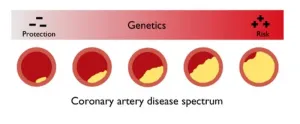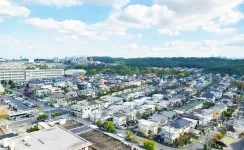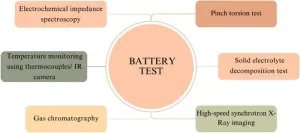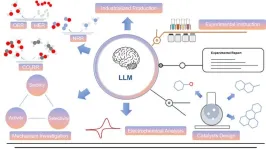Research signals major milestone in cutting harmful gases that deplete ozone and worsen global warming
2024-06-11
(Press-News.org)
A new study has revealed significant progress in the drive to reduce levels in the atmosphere of chemicals that destroy Earth’s ozone layer, confirming the success of historic regulations limiting their production.
The findings, led by the University of Bristol and published today in Nature Climate Change, show for the first time a notable decline in the atmospheric levels of potent ozone-depleting substances (ODS), called hydrochlorofluorocarbons (HCFCs). These HCFCs are also harmful greenhouse gases, so a reduction should also lessen global warming.
The Montreal Protocol was agreed to internationally in 1987 to introduce controls on the production and usage of ODS, which were once widely used in the manufacture of hundreds of products, including refrigerators, aerosol sprays, foams and packaging.
HCFCs were developed as replacements for chlorofluorocarbons (CFCs). While production of CFCs has been banned globally since 2010, HCFC production and usage is still being phased out.
Lead author Dr Luke Western, Marie Curie Research Fellow at the University’s School of Chemistry, said: “The results are very encouraging. They underscore the great importance of establishing and sticking to international protocols.
“Without the Montreal Protocol, this success would not have been possible, so it’s a resounding endorsement of multilateral commitments to combat stratospheric ozone depletion, with additional benefits in tackling human-induced climate change.”
The international study shows the total amount of ozone depleting chlorine contained in all HCFCs peaked in 2021. Because these compounds are also potent greenhouse gases, their contribution to climate change also peaked in that year. This maximum occurred five years before the most recent predictions. Although the drop between 2021 and 2023 was less than 1%, it still shows HCFC emissions are heading in the right direction.
Dr Western said: “Their production is currently being phased out globally, with a completion date slated for 2040. In turn these HCFCs are being replaced by non-ozone depleting hydrofluorocarbons (HFCs) and other compounds. By enforcing strict controls and promoting the adoption of ozone-friendly alternatives, the protocol has successfully curbed the release and levels of HCFCs into the atmosphere.”
The results rely on high-precision measurements at globally distributed atmospheric observatories, using data from the Advanced Global Atmospheric Gases Experiment (AGAGE) and the National Atmospheric and Oceanic Administration (NOAA).
"We use highly sensitive measurement techniques and thorough protocols to ensure the reliability of these observations," said co-author Dr Martin Vollmer, an atmospheric scientist at the Swiss Federal Laboratories for Materials Science and Technology (EMPA).
Co-author Dr Isaac Vimont, a research scientist at the NOAA in the United States, added: “This study highlights the critical need to be vigilant and proactive in our environmental monitoring, ensuring other controlled ozone depleting and greenhouse gases follow a similar trend which will help to protect the planet for future generations.”
END
ELSE PRESS RELEASES FROM THIS DATE:
2024-06-11
New York, NY [June 11, 2024]—Using an advanced artificial intelligence tool, researchers at the Icahn School of Medicine at Mount Sinai have identified rare coding variants in 17 genes that shed light on the molecular basis of coronary artery disease (CAD), the leading cause of morbidity and mortality worldwide.
The discoveries, detailed in the June 11 online issue of Nature Genetics [DOI: 10.1038/s41588-024-01791-x], reveal genetic factors impacting heart disease that open new avenues for targeted treatments and personalized approaches to cardiovascular care.
The investigators used an in silico, or computer-derived, score for coronary artery disease (ISCAD) ...
2024-06-11
Peer-reviewed – observational study - cells
A common type of ocean algae plays a significant role in producing a massively abundant compound that helps cool the Earth’s climate, new research has discovered.
The findings of the study by the University of East Anglia (UEA) and Ocean University of China (OUC) could change our understanding of how these tiny marine organisms impact our planet.
The team identified the bloom-forming Pelagophyceae algae as potentially abundant and important producers ...
2024-06-11
Boosting the performance of solar cells, transistors, LEDs, and batteries will require better electronic materials, made from novel compositions that have yet to be discovered.
To speed up the search for advanced functional materials, scientists are using AI tools to identify promising materials from hundreds of millions of chemical formulations. In tandem, engineers are building machines that can print hundreds of material samples at a time based on chemical compositions tagged by AI search algorithms.
But to date, there’s been no similarly speedy way to confirm that these printed materials actually perform as expected. ...
2024-06-11
Toronto, ON —New research conducted by the University of Toronto and published in the Journal of Affective Disorders Reports highlights that among Canadians previously diagnosed with bipolar disorder, 43% were free of all bipolar symptoms and approximately 1 in 4 (23.5%) had achieved complete mental health.
Despite these encouraging findings, those with a history of bipolar disorder were much less likely to be flourishing than their peers. Three-quarters of those without a history of bipolar disorders were in complete mental health.
“Even after accounting for various sociodemographic and health factors, individuals with ...
2024-06-11
When molecules are irradiated with infrared light, they begin to vibrate due to the energy supply. For Andreas Hauser from the Institute of Experimental Physics at Graz University of Technology (TU Graz), this well-known phenomenon was the starting point for considering whether these oscillations could also be used to generate magnetic fields. This is because atomic nuclei are positively charged, and when a charged particle moves, a magnetic field is created. Using the example of metal phthalocyanines – ring-shaped, planar dye molecules – Andreas Hauser and his team have now calculated ...
2024-06-11
Spatial navigation – the ability to select and follow a route from one place to another – is a skill we use every day. Depending on practice, general cognitive ability, and childhood environment, some people are naturally better at this than others. But research has also shown that people’s skill in spatial navigation tends to decrease with increasing age.
This decline in navigation skill has been generally attributed to worsening spatial memory, due to changes in brain structure and function that naturally occur with age. But what if it isn’t just due to our spatial memory declining, but also to changes in how we explore a novel ...
2024-06-11
During Japan’s 1960-90 population boom, new towns sprouted up across the nation. These new towns were quiet residential neighborhoods of suburban areas, many of which are now shrinking in terms of inhabitants. They have become old new towns, aging neighborhoods amid Japan’s population decline, frequently dotted with vacant homes.
Dr. Haruka Kato, a junior associate professor at the Graduate School of Human Life and Ecology at Osaka Metropolitan University, examined the nonlinear relationship between population decline and the urban transformation of residences to other land-use plots in old new towns. His research group wanted ...
2024-06-11
In an era where sustainable energy is paramount, a groundbreaking study provides critical insights into battery health management. It meticulously examines the design, optimization, fault detection, and recycling of Lithium-ion, Lead Acid, and Nickel Metal Hydride (NiMH) batteries—crucial components for the next generation of portable devices, electric vehicles, and renewable energy systems.
As our reliance on electric vehicles and renewable energy systems grows, so does the demand for efficient and sustainable ...
2024-06-11
Large language models, outstanding representatives of modern technology, have significant impacts on various fields of modern society. These models, constructed by billions of neurons, incorporate the extensive knowledge accumulated by humans so far, possessing the exceptional abilities to chat with people around the world fluently. Their human-like intelligence enables them to tackle various challenges of modern society and shows great potential for applications in various fields.
Recently, a research team led by Prof. Ziyun Wang from the University of Auckland in New Zealand delved into the potential applications of large language models in the field ...
2024-06-11
Photocatalytic water splitting, a sustainable energy strategy, utilizes solar energy to produce clean hydrogen fuel. While it offers a promising solution to the global energy crisis and environmental pollution, the slow kinetics of photogenerated electron-hole pairs result in low activity for most semiconductor materials, even with sacrificial agents. To that end, integrating electron traps and reactive centers could be a feasible strategy to enhance charge separation and catalytic performance.
In ...
LAST 30 PRESS RELEASES:
[Press-News.org] Research signals major milestone in cutting harmful gases that deplete ozone and worsen global warming





